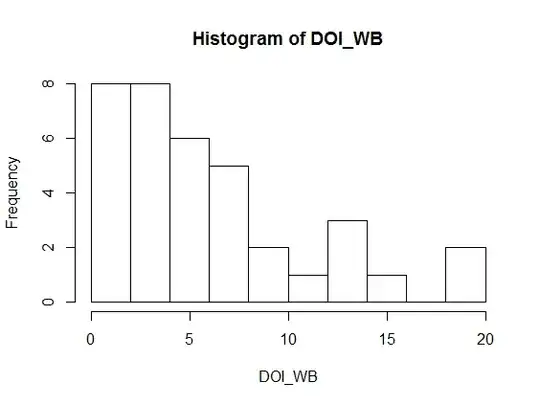My question is very similar to this previous post. I'm searching for the right distribution family to use in a GAM. My data are disease occurrence on benthic organisms (continuous response variable) and are right skewed (see histogram below). I would like to test the relationship between disease occurrence and percentage cover (continuous covariable) including the effect of Site (fixed categorical) and Zone (random, nested within Site).
I don't have many zeros, and these are true zeros, therefore I don't think a zero-inflated model would be the most appropriate. So my question is: which would be the most appropriate distribution family to use? Any advice would be highly appreciated, thanks!
